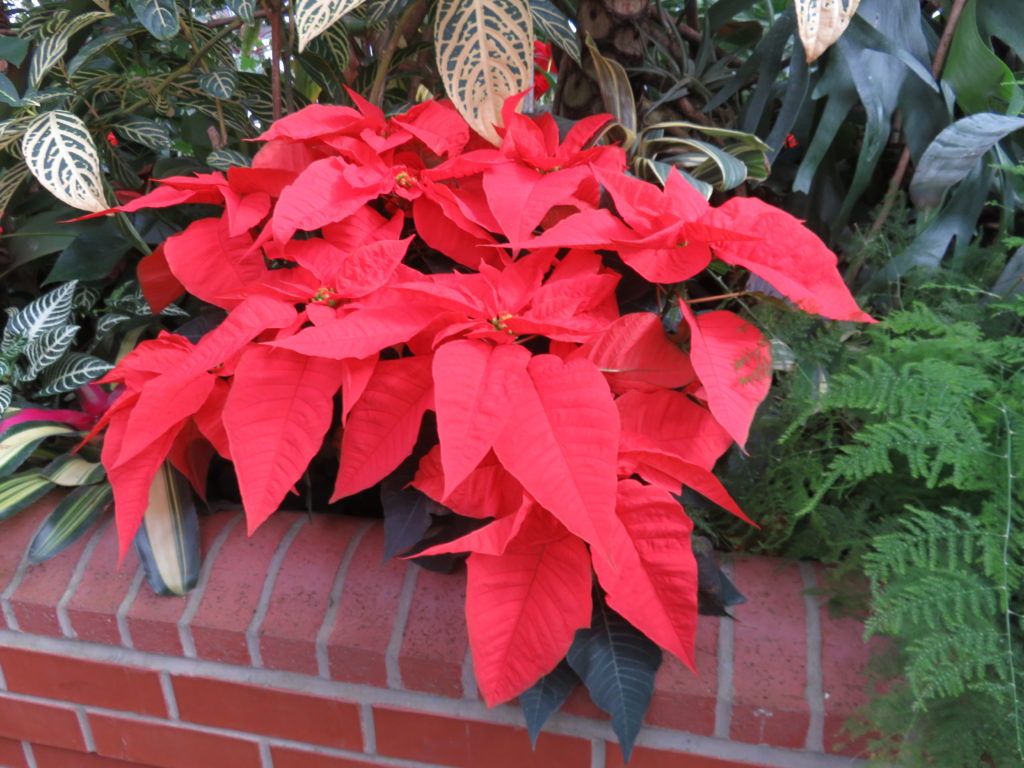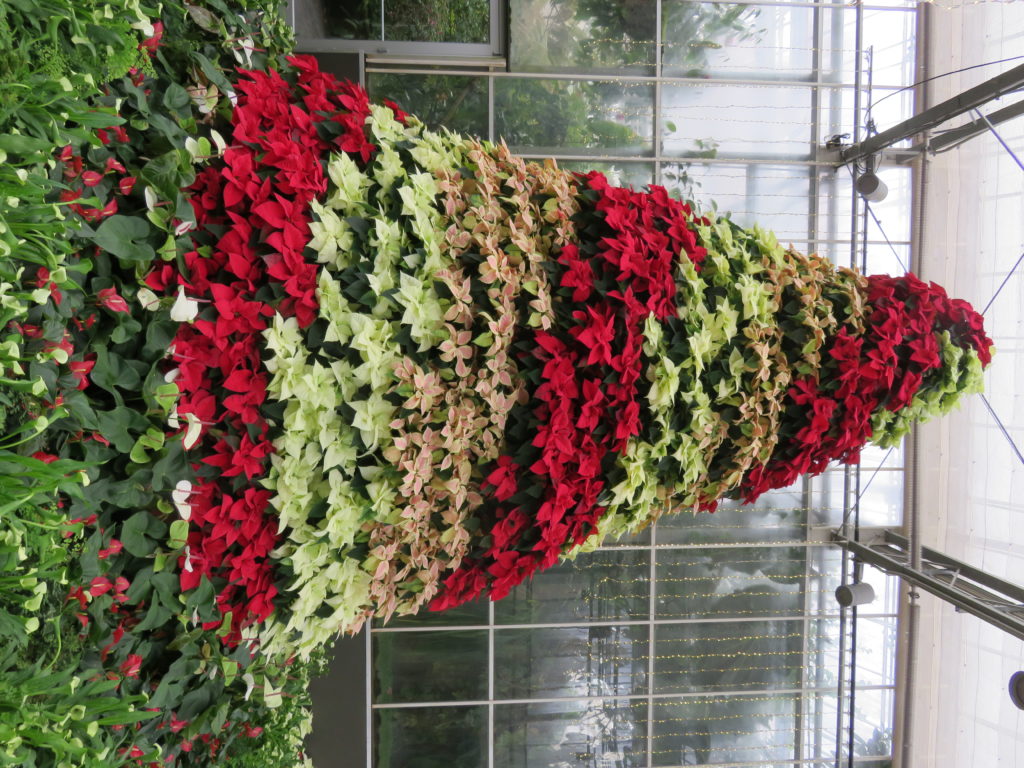Poinsettias (Euphorbia pulcherrima) have become a symbol of Christmas and the winter holidays. Their colorful bracts (most people call them “flowers”) are actually modified leaves. Red remains the most popular color, but select from white, pink, burgundy, marbled, speckled and new “tropical shades”.

Buy a healthy poinsettia! The small yellow flowers in the center of the bracts (called “cyathia”) are fresh and not dried out or turning brown. If the cyathia have dried out, do not purchase. Once the flowers start to age, the colorful bracts soon decline. In the room do not set the plant close by a heat source or cold window. Pick up the pot — if it feels light, then water it.
Inside the typical home or apartment, poinsettia only needs water every 5-7 days. Before watering your poinsettia, remove the decorative pot covers or foil that most poinsettia varieties are packaged in. The pot cover can hold too much water, something a poinsettia does not like. Punch holes in the bottom of the covers and set on a saucer. Do not leave your plant pot(s) sitting in water over 3 hours as it may injure the roots.
Place your poinsettia near a sunny south- or east- facing window of your house or apartment. Room temperatures should be between 65 – 75 °F. Poinsettias thrive in a well-drained soil-less media (potting mix).
Feed the plant every 2-3 weeks with a water-soluble garden or house plant fertilizer @ one-half the rate on the package directions. Your poinsettia should continue to look pretty into the early days of spring.

Poinsettia plants are NOT poisonous – The white sap is not toxic to humans, dogs and cats. Some people and pets may be sensitive to the plant’s sap which may cause a skin irritation. Some veterinary medicine websites state that poinsettias can be mildly toxic to dogs and cats and can cause vomiting, drooling, and, rarely, diarrhea.

 Posted in
Posted in 
